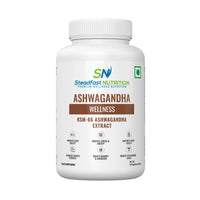Table of Content
Stamina and endurance mean the capacity to sustain prolonged physical or mental effort, helping you persevere through discomfort. Essential for everyday activities and sports performance, these abilities enhance overall health and task efficiency. The article examines scientifically-backed methods to boost stamina and endurance, explaining both the terms and the differences between them. It covers key workouts, lifestyle tips, and strategies to increase stamina and endurance.
What is the difference between stamina and endurance?
Stamina and endurance refer to the ability to sustain activity over time, but they address different aspects of this capability:
Stamina
-
Definition:
Stamina is the ability to sustain prolonged physical or mental effort at maximum capacity without succumbing to fatigue. It’s the energy and strength that keep you going during high-intensity activities.
-
Focus:
Stamina emphasises both mental and physical power to maintain effort over time. It’s about feeling energetic and lively throughout an activity.
-
Context:
Stamina is often used to describe performance in activities that require bursts of high-intensity exercise, followed by active recovery. Examples include sports like football, triathlons, rowing, hockey, weight-lifting, tennis, and basketball.
-
Result of Fitness:
Stamina itself is not a component of physical fitness, but it is a result of becoming fitter. Good stamina allows individuals to perform activities without a noticeable drop in performance due to fatigue. For instance, a professional basketball player with good stamina can maintain their performance throughout an entire game.
Endurance
-
Definition:
Endurance refers to the body’s ability to withstand and adapt to the stresses of prolonged exercise over time. It involves the cardiovascular system’s efficiency in delivering oxygenated blood to working muscles.
-
Focus:
Endurance is about sustaining physical activity over a long period, focusing on cardiovascular and muscular efficiency.
-
Context:
Endurance is critical for activities that require prolonged effort, such as marathon running, mountain biking, and swimming. The goal in endurance sports is not to work at maximum capacity but to maintain a steady level of activity over an extended period.
-
Components of Fitness:
Endurance is a key component of physical fitness, comprising cardiorespiratory and muscular endurance.
- Cardiorespiratory Endurance: This is the ability of the heart, lungs, and blood vessels to supply oxygen to muscles during prolonged physical activity. It can be measured using tests like a 1.5-mile run for a specific duration.
- Muscular Endurance: This is the ability of muscles to continue performing without fatigue. It can be measured with the repetition of a movement and through tests that assess the maximum number of push-ups one can do (to test upper-body endurance) or the maximum sit-up capacity of a person (to test core endurance).
Key Difference
-
Stamina:
Primarily relates to the ability to perform at high intensity for a shorter duration, fighting off fatigue and maintaining energy levels.
-
Endurance:
Pertains to the ability to sustain activity over a longer duration, with a focus on efficient cardiorespiratory and muscular function.
Understanding the nuances between stamina and endurance helps tailor fitness programs to meet specific goals. Whether aiming to boost high-intensity performance or sustain long-duration activities, recognising these differences is crucial for effective training and overall health improvement.
How does endurance relate to fitness?
Endurance is an important aspect of overall fitness because it not only improves your stamina but also enhances your cardiovascular health, boosts metabolism, and increases your capacity to perform daily tasks with less fatigue.
Endurance activities help maintain the health of your heart, respiratory, and circulatory systems by increasing oxygen capacity and improving your overall fitness. Hence, sustained daily physical activity can overcome the risk of several diseases like diabetes, heart disease and stroke.
Best Ways to Increase Stamina And Endurance
There are numerous ways to boost your stamina and endurance and it's not just about hitting the gym. Stay committed, and you'll see results. Here are 17 science-backed tips to help you increase your stamina.
1. Follow the SAID Principle
Building stamina and endurance involves a multifaceted approach that includes understanding and applying key fitness principles. SAID principle (Specific Adaptation to Imposed Demands) is essential for your body to adapt to the specific type of exercise you regularly perform. It involves repeatedly performing a particular exercise or set. This means that if you want to improve your stamina and endurance, you need to engage in activities that specifically target these aspects, such as running, swimming, or cycling.
2. Understand the Progressive Overload Technique
Progressive overload training is one of the best ways to increase stamina. It includes gradually increasing the intensity or difficulty of workouts over time, which builds muscle mass and strength. This involves increasing the weight, reps, sets, or time of performing a specific activity. This principle involves challenging your body with increased exercise intensity. This is often followed with the 10 percent rule, which suggests increasing your weekly intensity, weight, or time by not more than 10% to prevent injury and allow your body to adapt. This steady progression ensures continuous improvement in stamina and overall fitness.
3. Understand the Importance of Regular Physical Activity
Regular physical activity is vital for building stamina. The American Heart Association recommends at least 150 minutes of moderate-intensity aerobic activity per week. Activities like brisk walking, running, swimming, or cycling can help you reach this goal. Pushing for more than 300 minutes per week can provide additional health benefits and build up stamina, increasing endurance.
4. Practise Yoga and Meditation
Incorporating relaxation techniques such as yoga and meditation can also significantly enhance stamina and endurance. Yoga helps restore and relax the body. It strengthen the respiratory system by utilising better oxygen uptake. Including certain asanas like naukasana, balasana and ustrasana may be beneficial. On the other hand, meditation helps reduce stress levels, which can otherwise hinder performance.
5. Monitor Heart Rate for Optimal Stamina Growth
Monitoring your heart rate during workouts is crucial for optimal stamina growth. Exercising promotes the flow of oxygen and blood efficiently to the muscles, reducing the load on the heart to pump the blood.
6. High-Intensity Interval Training (HIIT)
High-Intensity Interval Training (HIIT) is a powerful tool for boosting stamina. HIIT involves alternating between short, intense bursts of exercise and recovery periods. This training method has been linked to numerous health benefits, including improved cardiovascular fitness and reduced body fat and metabolic stress. HIIT workouts, such as sprints combined with walking or high-intensity exercises like burpees, can significantly enhance stamina and endurance.
7. Opt for Long Walks
Walking is a repetitive exercise performed under the load of your body. The longer you walk, the more endurance you will build. Once your walking endurance develops, try light jogging or running.
8. Try Isometric Exercises
Isometric exercises involve increased contraction of muscles in the same position without any change in length. They include planks, squat holds, and glute bridges and increase muscular endurance by improving your capacity to perform for longer periods while stressed.
9. Enjoy your Workouts
Enjoying your workouts is essential for maintaining consistency and overcoming mental barriers. Choose activities that you find fun and engaging, whether it’s dancing, hiking, or participating in group sports. When you enjoy your workouts, you’re more likely to stick with them and see long-term improvements in stamina. Don’t try to overdo the workout session, it may hamper the workout regime, leading to a risk of injury or overtraining syndrome, forcing you to take a longer than usual break.
10. Keep Yourself Hydrated
Hydration plays a vital role in enhancing stamina and endurance. Dehydration can impair performance and lead to fatigue, so it’s important to drink enough water before, during, and after your workouts. For longer sessions, consider replenishing electrolytes lost through sweat to maintain optimal performance. Fluids also help regulate body temperature and reduce muscle cramps.
11. Manage Stress
Managing stress is essential for maintaining stamina, yet it is often overlooked. Both emotional and physical stress can negatively affect your performance. Incorporating relaxation techniques, ensuring proper rest, and balancing your workout routine can help manage stress levels effectively. A lack of sleep may result in increased stress and reduced motivational levels, leading to a delay in recovery.
12. Balance Combinations of Workouts
Combining strength training with cardio workouts can work wonders for overall stamina. Strength training increases muscle capacity, while cardio improves cardiovascular efficiency.
13. Prioritise a Balanced Diet
A balanced diet is fundamental for sustained energy and stamina. Focus on foods like fruits, vegetables, proteins, healthy fats, and carbohydrates. Carbohydrates are especially important as they provide the primary fuel source for your body during exercise. Eating a balanced meal before and after your workout can enhance performance and prevent early fatigue.
14. Make Time for Rest and Recovery
Rest and recovery are vital, allowing muscles to heal and reducing soreness and injury risk. Ensure you get adequate sleep and take breaks between sets during workouts to maintain high performance. During rest, the muscles start healing, restoring the blood flow and promoting quick recovery.
15. Boost Stamina with Music
Listening to music during workouts can significantly boost your stamina. Music distracts from pain and tiredness, increasing endurance and elevating mood. Studies have shown that music can lower your heart rate during exercise, allowing you to work out longer and more efficiently. Music can enhance exercise performance, delay fatigue, and increase overall endurance, power, and strength.
16. Increase Stamina with Caffeine Before Exercise
Taking caffeine before exercising can enhance stamina, energy levels, and alertness, showing a more pronounced effect in men than in women, according to studies. However, it's important to avoid reliance on caffeine for consistent performance improvements.
17. Supplements for Building Stamina and Endurance
Stamina is the body's resistance to fatigue, while endurance combines stamina with the ability to handle pain and challenging conditions. Supplements can enhance energy and reduce fatigue during physical activity. Intake of natural supplements with a balanced diet can further boost stamina and endurance.
Whey protein is beneficial for stamina and endurance as it supports muscle repair, synthesis and maintenance. During prolonged exercise, the body uses protein as an additional energy source, making adequate protein intake crucial to prevent muscle loss. Consuming whey protein with carbohydrates can enhance protein and glycogen synthesis, improving overall performance. Whey protein, which comes in concentrate, isolate, and hydrolysate forms, is easily digestible and quickly absorbed, making it ideal for muscle growth and recovery. Steadfast Nutrition has the best whey protein powder that is clinically tested, FSSAI-approved and comes in single-serving sachets for precise dosage and convenience.
Supplementation with Ashwagandha, a powerful adaptogenic herb used in Ayurvedic medicine, can significantly improve stamina, reduce stress, and enhance overall endurance. Ashwagandha is also known to increase muscle strength. It is advisable to take supplements with the recommendation of a healthcare professional.
Conclusion
Improving stamina takes consistent effort and patience. It develops gradually over time rather than instantly. With dedication and perseverance, you can achieve remarkable results in enhancing your endurance over time. So, stay committed and you'll be amazed by your progress!



